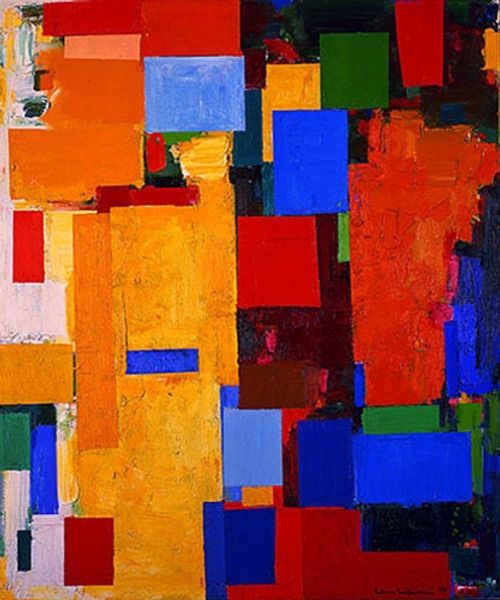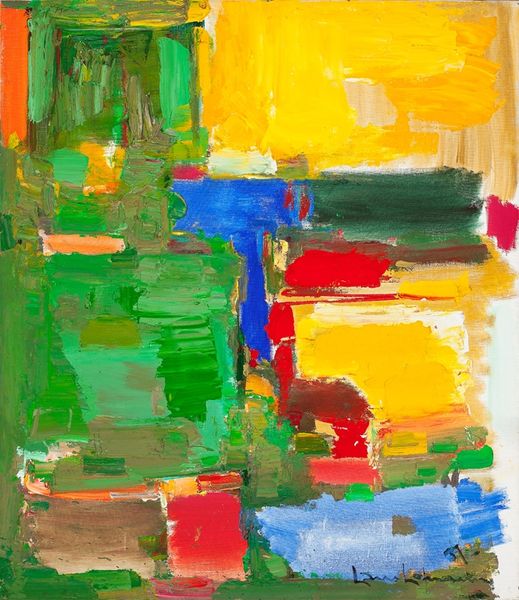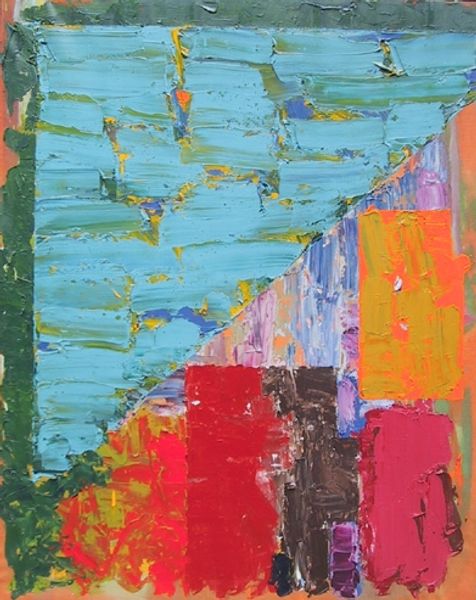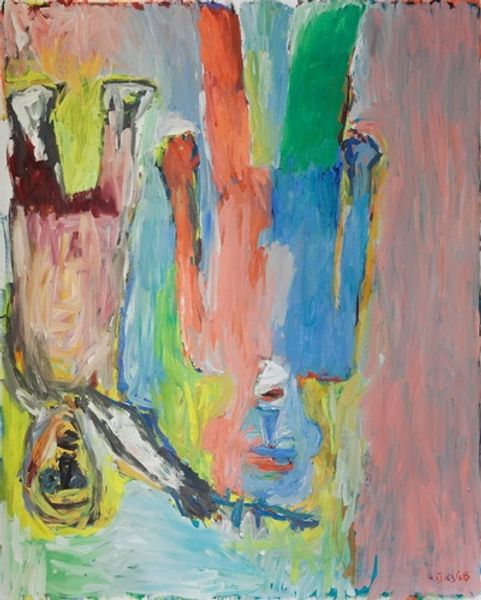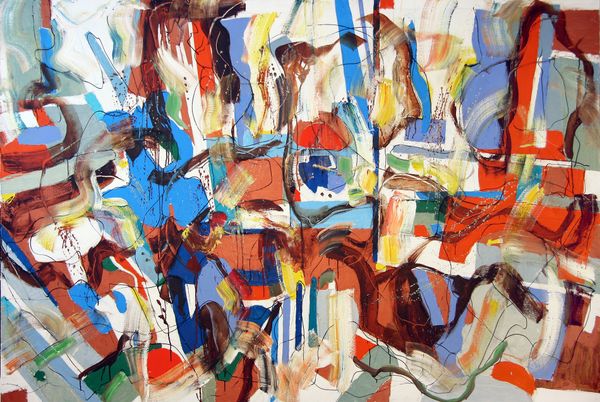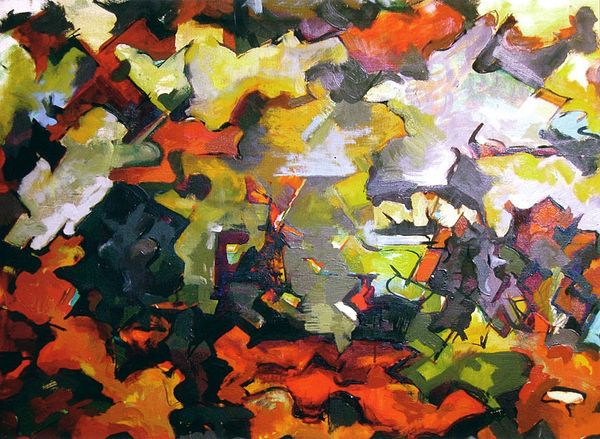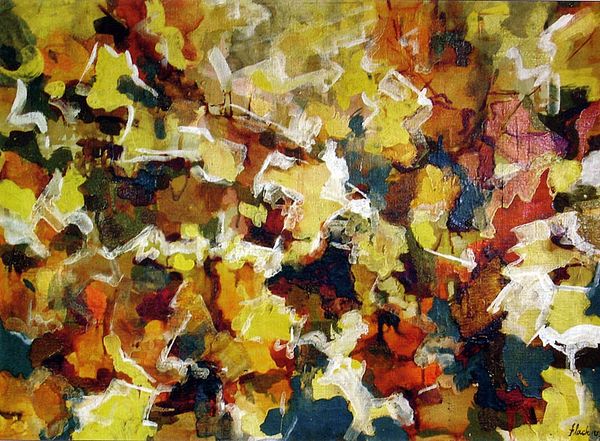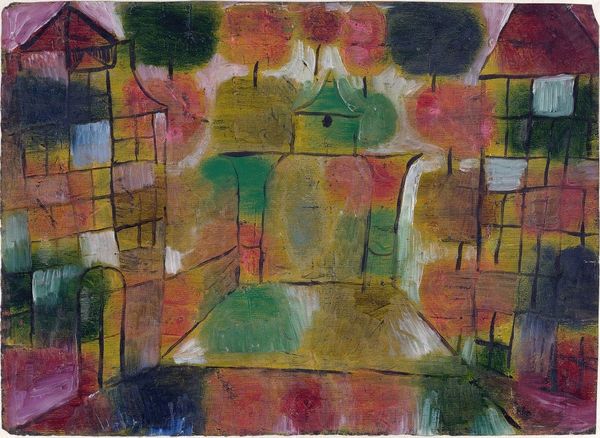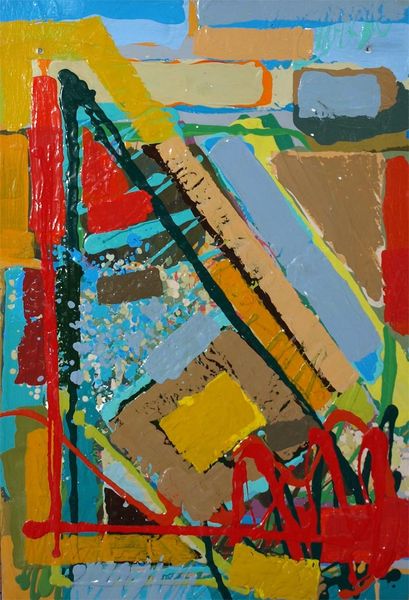
painting, oil-paint
#
abstract expressionism
#
fauvism
#
non-objective-art
#
painting
#
oil-paint
#
geometric
#
expressionism
#
abstraction
#
abstract art
Copyright: Public domain
Editor: Here we have Kandinsky's "304" painted in 1910 using oil paint. It's a whirlwind of vibrant colours and chaotic shapes, with no immediately discernible subject. It feels almost violently expressive to me, a real assault on the senses. What do you see in this piece? Curator: For me, this isn't just a painting; it's a pivotal moment in art history reflecting seismic shifts in early 20th-century European society. Kandinsky, breaking from representational art, embodies the anxieties and uncertainties of a world hurtling towards modernity. The clashing colors, the geometric forms... they don't just *look* chaotic, they *are* chaos—a rejection of established power structures and artistic norms. Do you see how the Fauvist influence clashes with the burgeoning language of abstraction? Editor: I do, now that you point it out. I see the boldness of colour in both, but here it feels like he's pushing *beyond* Fauvism. The colours are symbols not of visual reality but… something else? Curator: Exactly! This painting can be viewed as a visual manifesto against oppressive forces. Think about the rise of industrialization, the growing unease with traditional authority, the stirrings of new political ideologies. Kandinsky, through his move towards abstraction, critiques a world clinging to outdated structures. The ‘violence’ you sensed is perhaps a liberation. How does understanding that historical context affect your perception of the work? Editor: It's interesting because before, I just saw the raw emotion. Now, I also see it as a political statement. It’s no longer just *his* feelings but *everyone’s* in that period, reflected back at me. Curator: And it raises crucial questions about whose stories are traditionally valued and what voices are considered art. Thinking about Kandinsky as a pioneer of non-objective art reframes the narratives of who holds power and whose perspectives truly matter. It shows how artists of the time struggled to show that. Editor: I see this piece with completely new eyes. It isn’t just about visual sensation, it's about social and political upheaval. Curator: Indeed, it's a reminder that art doesn't exist in a vacuum, but rather in direct conversation with the society that shapes it, for good and bad.
Comments
No comments
Be the first to comment and join the conversation on the ultimate creative platform.

